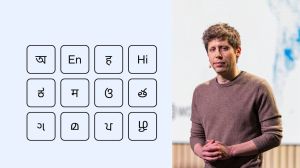Russia, India joins hands to exploit thorium as reactor fuel
MUMBAI, OCT 3: India and Russia have signed a protocol for cooperation in developing thorium-based nuclear fuel for use in the pressurised...

MUMBAI, OCT 3: India and Russia have signed a protocol for cooperation in developing thorium-based nuclear fuel for use in the pressurised light water reactors (VVERs) being supplied by the Russians for Kudankulam.
Signed on August 2, this year, the protocol of the meeting of specialists of the Bhabha Atomic Research Centre (BARC) and the Nuclear Power Corporation of India (NPC) and Kurchatov Institute (KI) of the Russian Federation (RF) also envisages development of the fuel that can be used without altering the design of the reactors that Russia would supply. At present, the VVERs are designed for use with enriched uranium as fuel.
India however wants a fuel to be developed which could be used in the VVERs that exploits thorium available in the country in abundance. According to the protocol, the fuel, a mixture of thorium and uranium dioxides, must be so designed that the advanced heavy water reactors (AHWRs) can use the same fuel. It in a sense aims to break new ground because hitherto the fuel used in heavy water reactors was natural uranium and the LWRs used enriched uranium.
This protocol concretised the “Proposal on R&D on Thorium Utilisation in Russian VVER-1000” signed on April 29, 1999, at Moscow, by chairman-designate Atomic Energy Commission (AEC) and secretary-designate Department of Atomic Energy (DAE), Anil Kakodkar and N Ponomarev-Stepnoi of KI.
The Moscow proposal has two interesting assertions. The “proposal” recognises that “an agreement between RF and India on the construction in India of a series of reactors of VVER-1000 does exist”. This confirms thatthe Russian deal to construct the VVER-1000 at Kudankulam was not restricted to two as put out by the DAE so far, but a “series of reactors” — six, in fact, as blurted out by Vice-Minister of RF for Atomic Energy E A Reshetnikov on September 29 at Rajasthan Atomic Power Station while addressing Indian scientists there.
The second interesting aspect of the proposal records that the KI had developed “a safe, low cost, nuclear fuel design with thorium utilisation for Russian VVER reactors that offers a nuclear fuel” that hasfive features.
It is 20 per cent less expensive than traditional fuel (enriched uranium), can be inserted in Russian VVERs without modification to the reactors, reduces nuclear waste by half in volume when compared to traditional fuel, reduces risk of fission material proliferation, and allows for effective thorium utilisation without reprocessing.
What is interesting is that when The Indian Express, in the presence of NPC CMD V K Chaturvedi, quizzed Reshetnikov as to whether any experiments were conducted in Russia on thorium as fuel for the Russian VVERs, he denied it and so did V V Kozlov, general director of Atomstroy Export. Chaturvedi, then, preferred to remain silent.
Yet, it is on record that such technology was being experimented with in the West as far back as 1977 funded partially by the Russians.
The BARC touts the thorium cycle as a uniquely developed in-house idea both in terms of technology and concept. The irony is that the Russian denial notwithstanding, the thorium reactor designed by veteran Israeli scientist Alvin Radkowsky was a joint US-Russian project!! Radkowsky headed the elite team in the 1950s that designed the first reactors for submarines and aircraft carriers.
What is even more interesting is that though the protocol for joint R&D on thorium utilisation was signed just two months ago, scientists at Indira Gandhi Centre of Atomic Research (IGCAR) at Kalpakkam confirmed to this paper when on a visit there that India was already so highly advanced in thorium utilisation in the form of a blanket along with certain amount of enriched uranium in the fast breeder test reactor (FBTR) that a prototype fast breeder reactor was already under construction at Kalpakkam using thesame technology.
The outgoing chairman AEC and secretary DAE, R Chidambaram in a recent address to the general body of the International Atomic Energy Agency (IAEA) at Vienna, also confirmed this hardly a few weeks ago.
Thorium (Th-232) — it has no isotopes — is non-fissile element, it has a thirst for capturing a neutron to convert itself into uranium-233, which is a fissile material and can be used as fuel in the reactors (see figure).
Funded by the US Department of Energy, the Los Alamos Laboratory in USA has already developed a model for commercial operation of reactors using a closed, thorium-uranium-oxide (ThUOX) fuel cycle light water reactors (TULWRs) "to satisfy a US demand that increases linearly from 80 GWe in 2020 to 200 GWe by 2100."
The question now is who is going to go commercial with the technology first: the US? or the Indian-Russian collaboration?



- 01
- 02
- 03
- 04
- 05




























